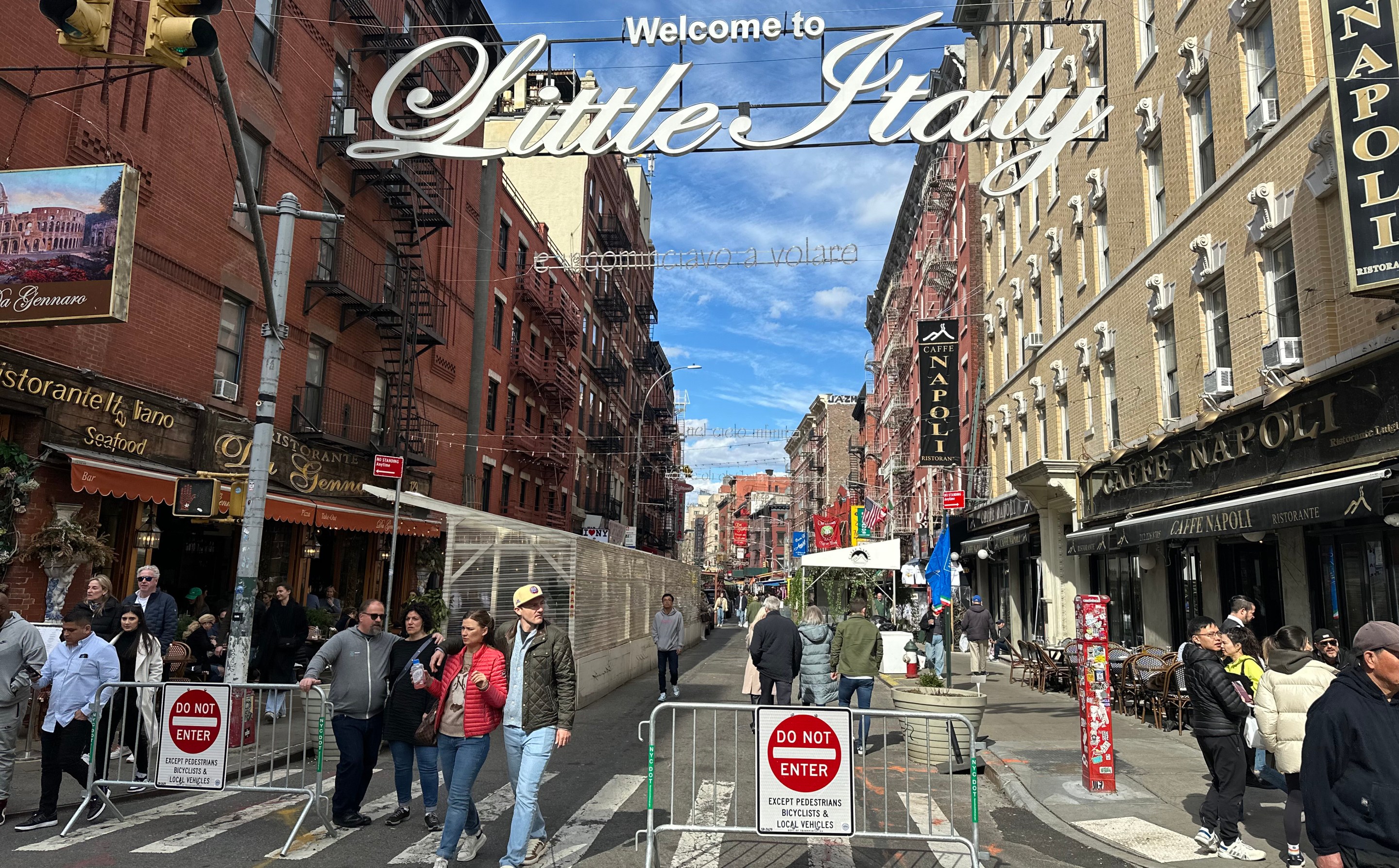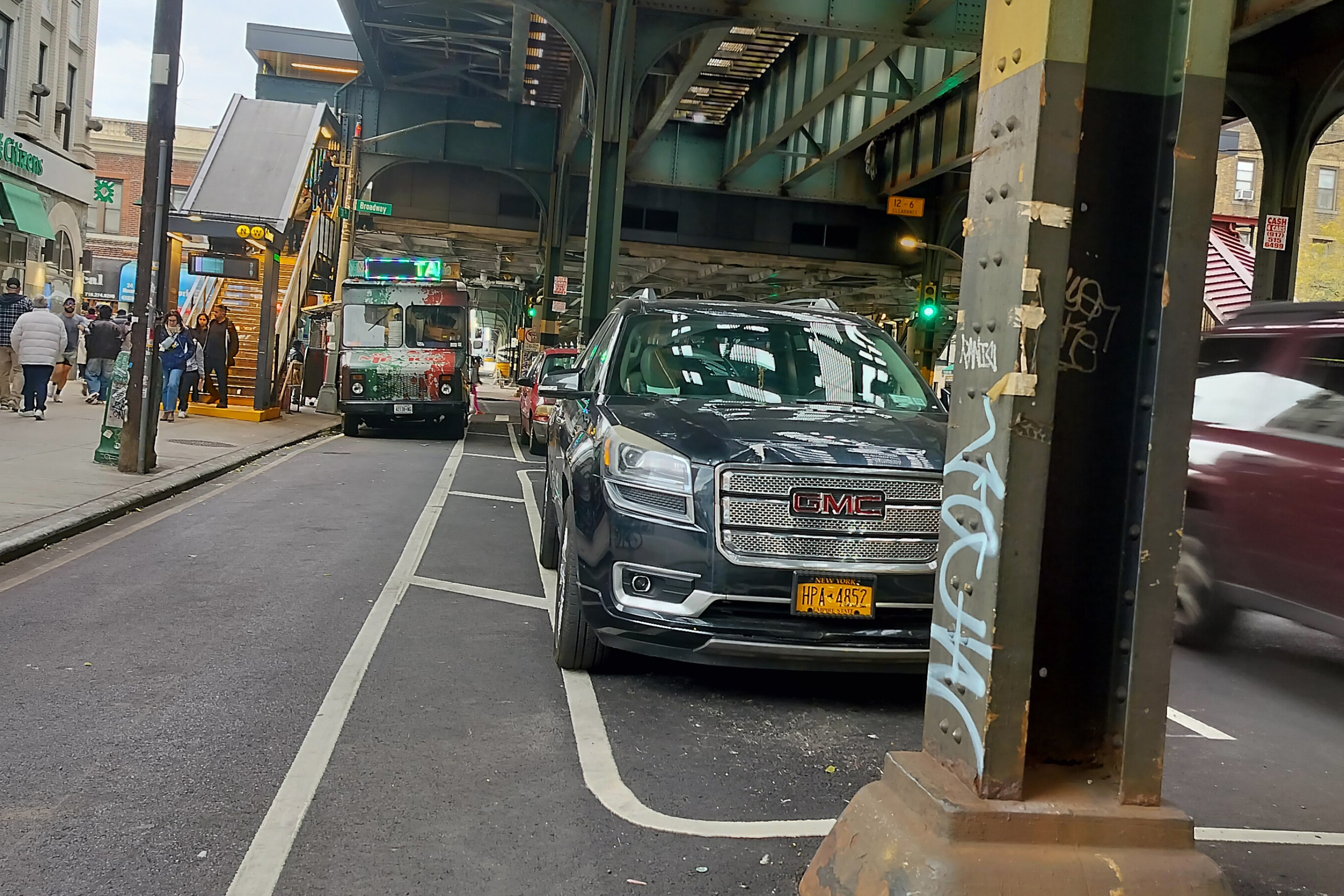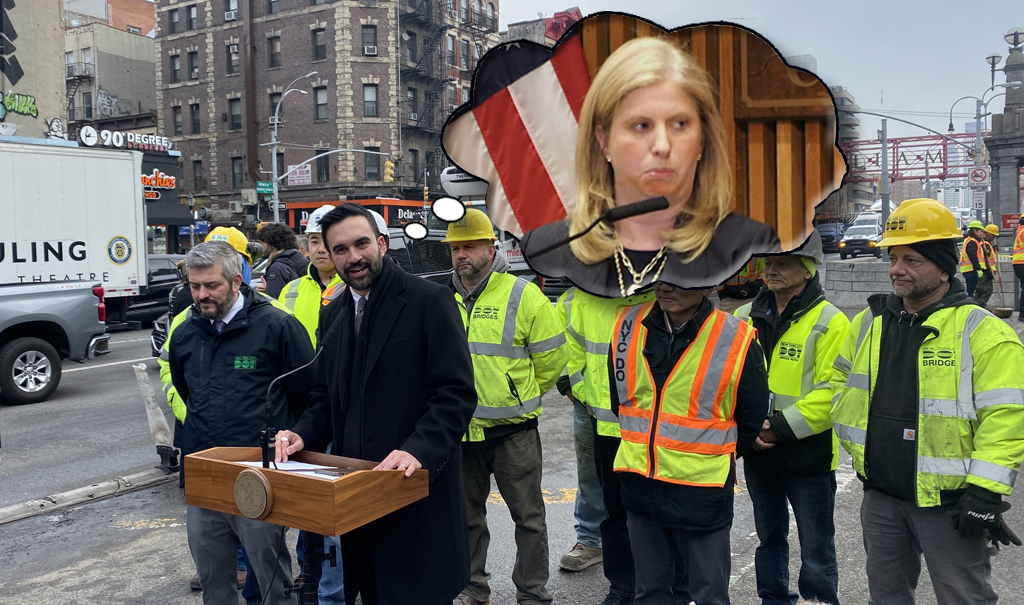It is time to ban cars on Mulberry Street.
Stretching a 3/4 of a mile north from Worth Street, Mulberry Street, the heart of Chinatown, Little Italy and even hip Soho and Nolita, is teeming with sidewalk cafes and dining sheds, street vendors, elegant boutiques, tourist shops and traditional spots like Café Roma and Da Nico.
Home to the San Gennaro festival, dragon dances for Chinese New Year and cannabis shops all year long, Mulberry Street contains multitudes.
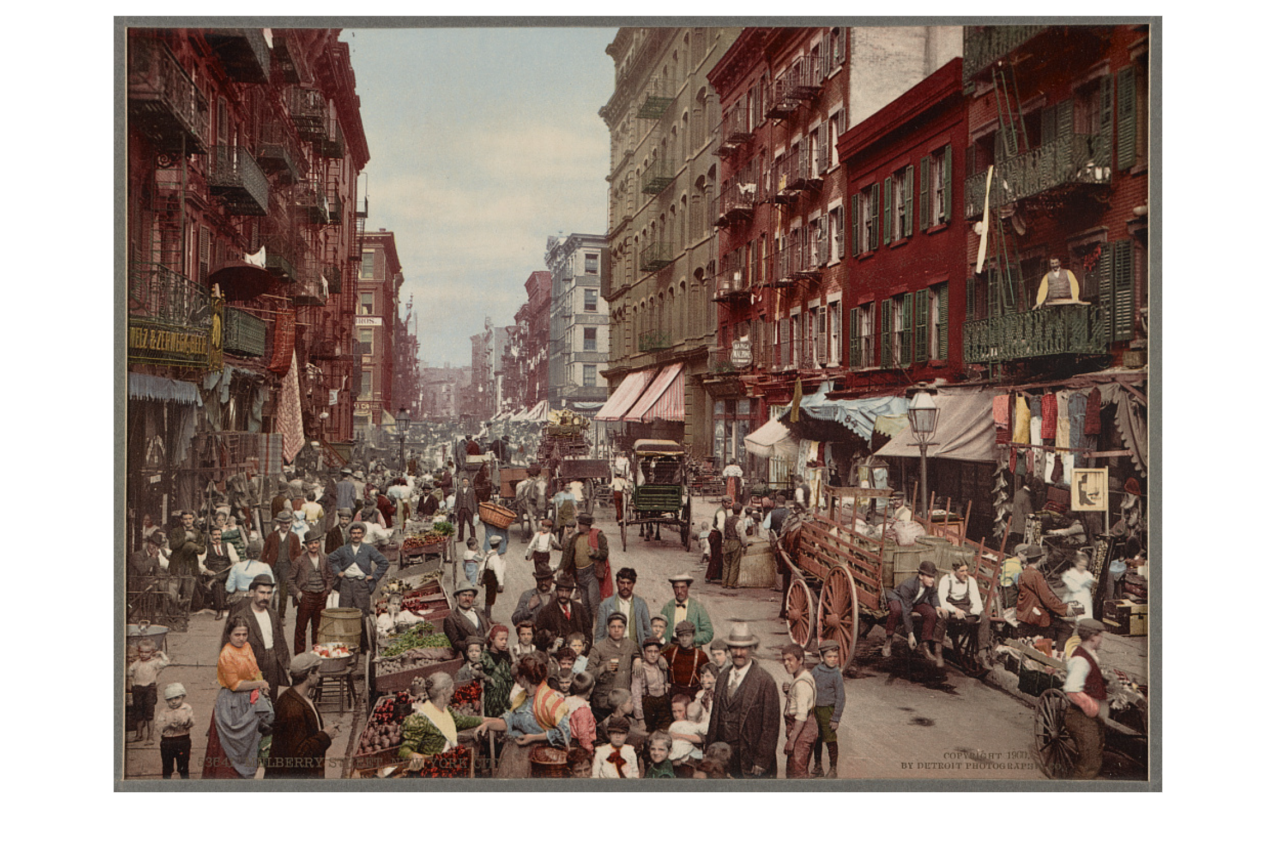
But the cars and trucks are the interlopers on this historic, pre-auto avenue. Mulberry is simply overwhelmed by spillover traffic from Canal Street and the nearby bridges and tunnels. The city has been talking about calming Canal for years, and interviewed 480 people on the street in 2022 [PDF], but hasn't done anything since, according to the agency's "Current Projects" page. (An agency spokesman said that more news would be shared later this year.)
On two afternoons and all day on weekends, Mulberry gets some relief as a Department of Transportation open street, but it’s only for two blocks from Hester to Broome streets.
During those hours, Mulberry gets magnificent — folks are strolling free of cars, the traffic, noise, and pollution — and one wonders why cars and traffic are ever permitted on Mulberry. Open Streets is an admirable program, but it’s like King Cnut commanding the ocean not to touch his feet — an ultimately ineffective gesture.
Do you live, work, shop or travel on Canal St in #Manhattan? Then we want to hear from you!
— NYC DOT (@NYC_DOT) July 25, 2022
Fill out the Canal St Visioning survey before 8/31: https://t.co/aQuxG1MEME pic.twitter.com/EV1TjkQiLV
The battle to clear Mulberry Street of cars has been waged for decades. As far back as 1974, the New York Times referred to the car ban on Mulberry between Canal and Broome as “pedonalizzazione” (Italian for “pedestrianization”) “in recognition of a traditional Italian approach to creation of networks of malls and tiny piazzas.”
And the DOT's most-recent surveying shows that the vast majority of people go to Canal Street for shopping or errands; only 4 percent drive themselves there while 67 percent get there on foot (the rest use transit or a bike).
When residents were asked to "identify and assess safety issues" that undermine "the overall experience for pedestrians, majorities of respondents said the sidewalks are too narrow (55 percent), car drivers fail to yield to pedestrians (53 percent) and that drivers speed (50 percent).
Clearly, something needs to be done to rein in cars and accommodate all these pedestrians — so one clear, easy move would be to pedestrianize Mulberry, not for a handful of hours, but every day, just as DOT pedestrianized Doyers Street in 2022.
The business community agrees.
"I love the street being closed [to cars]," said Vincent Zeccardi, the owner of Caffe Roma, which has been in his family since 1891. "People can walk around, not worried about cars, and it brings a little bit more of a historic, European atmosphere to the neighborhood.
"It's a historic district and should be treated as such," he added.
John Michael Rossi of the iconic Rossi & Co on Broome Street just around the corner from Mulberry is also in favor of open streets, saying the pedestrianized street "added charm to the neighborhood" and that the foot traffic, especially in nice weather, is a benefit to local businesses.
A personal connection
My own life has intersected with Mulberry Street for more than half a century.
My paternal grandfather Giovanni and grandmother Maria settled into an apartment at 82 Madison St. after World War I, and he remained there until he was 101. My father lived in “the Fourth Ward,” as he referred to the neighborhood, until he left for WWII. Upon his return, he would take me to visit 82 Madison for most of my childhood.
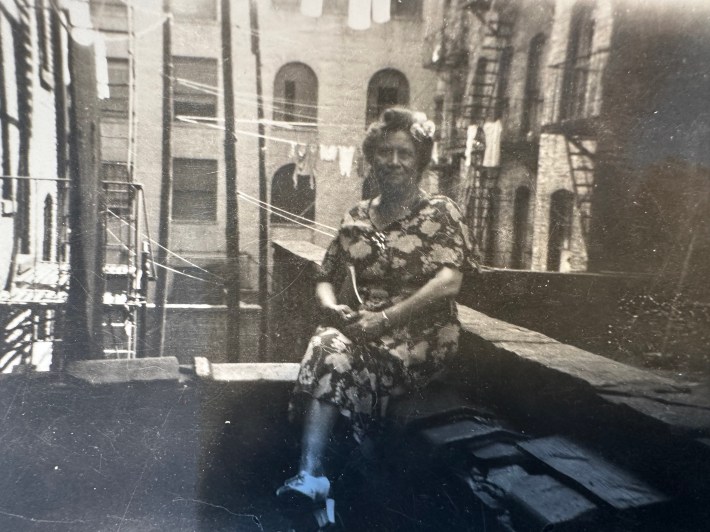
What is old is now new again, as my wife (born in Shanghai) and I live just outside Chinatown/Little Italy. Only recently I have paid attention to the traffic, the cars, and the congestion that each day torments Mulberry Street — but the neighborhood has been outraged for years.
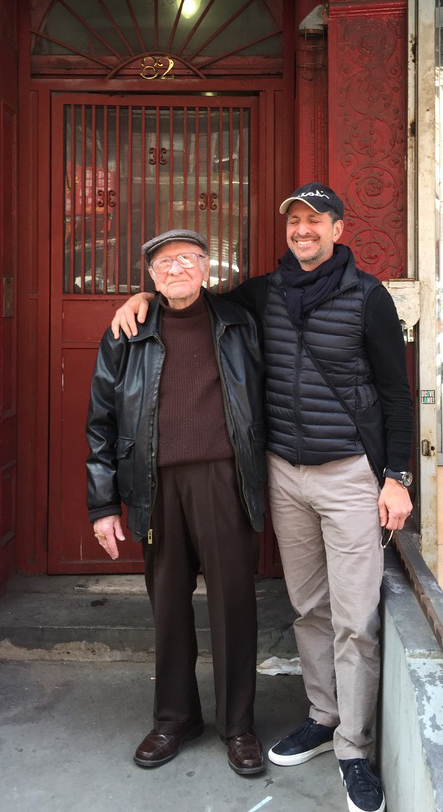
In 2011, for example, the Tribeca Trib reported on a federally funded Canal Area Transportation Study, conducted over the previous eight years by the New York Metropolitan Transportation Council.
“Widened sidewalks, fewer left turns and new stop light patterns are among the changes that could relieve the chronic traffic mess that is Canal Street, according to a recently released long-term study. Left unchanged, the report warns, Canal and its neighboring side streets will only grow worse.”
And so they have.
In 2020, the Transportation Committee of Community Board 1 voted unanimously to demand that the Department of Transportation improve Canal Street with expanded pedestrian space and an east-west protected bike lane on or near Canal and the smaller surrounding streets like Mulberry, Bayard and Baxter continue to suffer and to bear the brunt of inaction.
Once a 'Play Street'
The irony is that cars used to be reined in on Mulberry.
“From the 1940s to the 1980s, Mulberry Street from Prince to Houston in Little Italy often became a ‘play street,’” says a plaque, which features images of street games, on a fence across from Old St. Patrick Cathedral. The historic marker is festooned with images of street games:
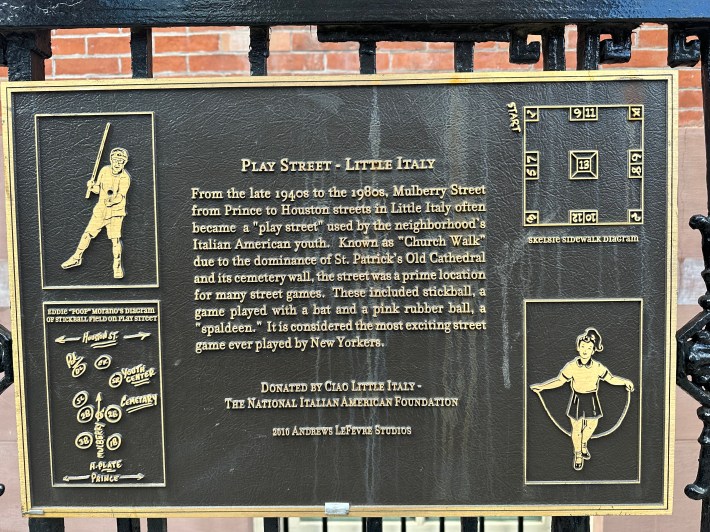
These days, with the addition of dining sheds, there are places where Mulberry Street barely measures 108 inches wide. And the average width of an SUV is 75 inches, so do the math: there are (literally) inches of space for cars and trucks to crawl through a roadway that functions as an off-ramp to the six-lane highway that is Canal Street.
Riding a bike on Mulberry is unsafe on any day:
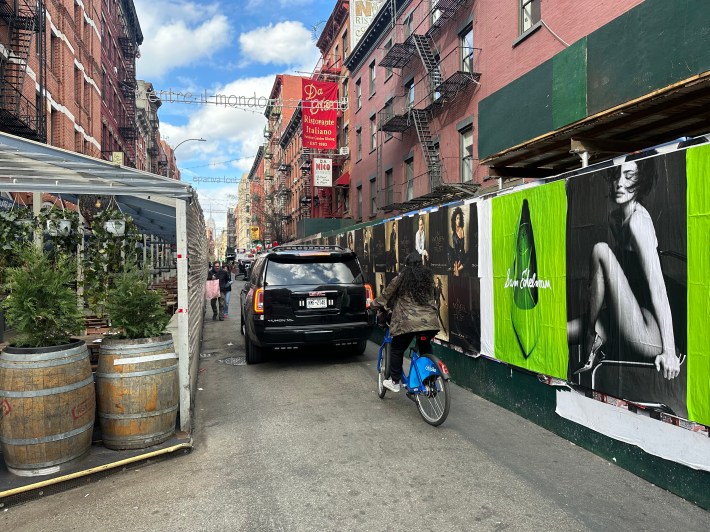
Meanwhile, sidewalk space is devoted to outdoor cafes and street vendors, leaving very little room for pedestrians.
Yet on Sunday afternoons, the open street reminds us of what Mulberry Street, liberated from cars and turned into pure social space, could be.
Why limit that joy to a few hours a week?
